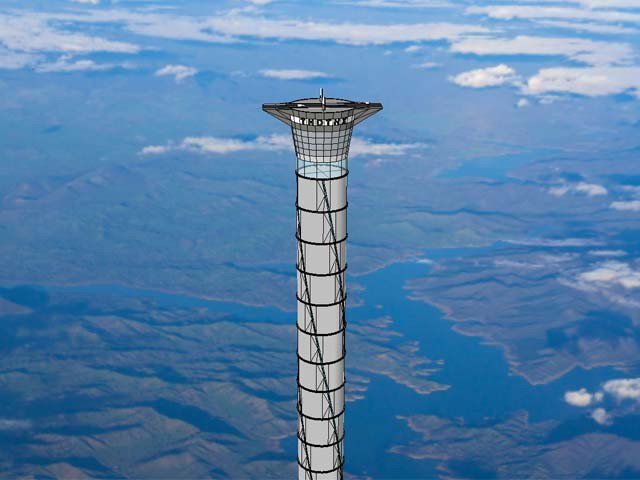Company Awarded Patent For ‘Space Elevator’
04:39PM Tue 18 Aug, 2015

A towering structure rising 20 kilometers into the air with its top in the sky may sound like something out of an Old Testament passage or science fiction novel, but a Canadian space company has proposed just that to cut the costs of space exploration.
Last month Thoth Technology was granted a United States patent for a “space elevator,” which would be more than 20 times taller than the 829-metre-high Burj Khalifa in Dubai, the tallest building in the world. That is also beyond the so-called “Armstrong limit” – a point at an altitude of 19 kilometers where body fluids start to boil off due to low air pressure.
“The space elevator tower has a segmented elevator core structure, each segment being formed of at least one pneumatically pressurized cell. The pressure cells may be filled with air or another gas,” the patent states.
“Elevator cars may ascend or descend on the outer surface of the elevator core structure or in a shaft on the interior of the elevator core structure.”
The structure would be stabilized by gyroscopic and active control machinery.
The company believes that it would be more efficient to launch spaceships from the stratosphere because of the decreased fuel consumption involved. The researchers propose using a platform on top of the space lift as a launching pad, which could cut the cost of space flight by around one third.
“Astronauts would ascend to 12 miles by electrical elevator,” said the inventor, Dr. Brendan Quine.
“From the top of the tower, space planes will launch in a single stage to orbit, returning to the top of the tower for refueling and reflight,” he added.
The scientists also say the elevator could also be used for scientific research, space tourism, communications, and wind-energy generation.
“Landing at 12 miles above sea level will make space flight more like taking a passenger jet,” said Thoth Technology President and CEO, Caroline Roberts.
Despite sounding like something out of science fiction, Thoth Technology’s concept is more realistic than previous ones.
The idea of a space elevator was first proposed by Russian scientist Konstantin Tsiolkovsky in the late 20th century. The idea was to deliver payloads from the ground to outer space by using a huge cable with one end anchored to the Earth’s surface and the other fixed in a geostationary orbit. However, scientists say that a full-fledged space lift is unfeasible due to the lack of a material which could support itself at a height of 36,000 kilometers where geostationary satellites orbit.











